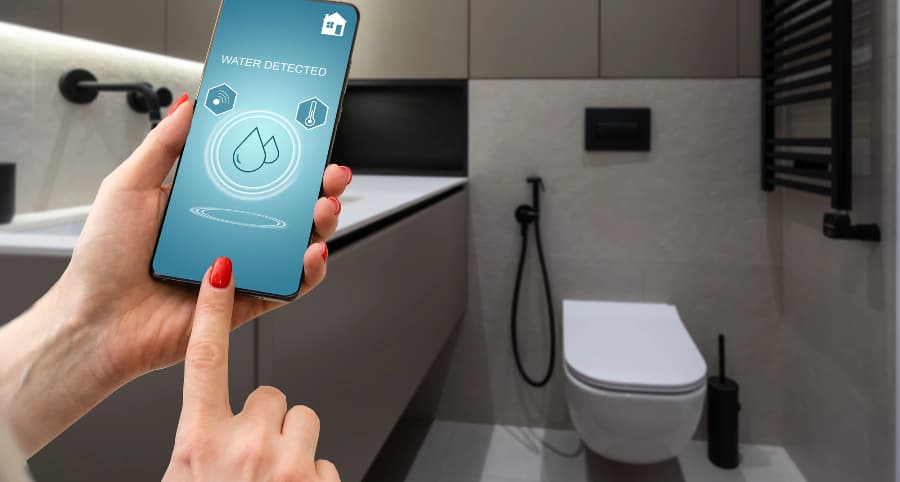How does a water sensor work and why install one with your Roanoke smart home?

One tiny leak at your property can result in major problems and thousands in damage. You need to defend against this threat; fortunately, there’s a straightforward way to accomplish this. A water sensor is a simple, effective, and economical solution. See how they work and why you might connect water sensors to your Roanoke smart home.
How water sensors safeguard Roanoke properties
Water infiltrates homes in numerous ways, whether from an appliance malfunction, plumbing failure, weather-related event, or just human error. Whatever way it takes place, you must know right away, and this is how water sensors help. But how do they really work?
Most water sensors are conductive and function with corresponding electrodes. When water reaches the electrodes, an electrical link is established, activating your alarm. You’ll also discover capacitive sensors that release an electrical field. Your alarm sounds when water touches the conductive areas of these components and disrupts the field. Optical sensors using infrared LED light are an additional option.
Get more protection from water sensors
A few innovative water sensors provide even more peace of mind as they use integrated temperature sensors. This is an exceptional feature in preventing frozen pipes. If there’s a drastic decrease in temperature, you’ll know right away. Taking measures before pipes break will protect you from water damage and costly repairs.
Why incorporate water sensors into your Roanoke smart home?
When water emergencies arise, you have to be warned immediately. You can attain this goal by integrating water sensors into your smart home. Whether you’re there to hear the alarm or away, you’ll receive an automatic alert on your mobile device. As an added benefit, your 24-hour monitoring team will be alerted. Each second matters in a water emergency to control the destruction and interruption to your life.
Where should you install water sensors?
Any location prone to flooding is a suitable position for water sensors. Place them in these spots:
- Bathrooms: Attach in back of toilets or next to bathtubs.
- Basements: Water commonly enters lower levels through leaky walls or as a result of excess rain or broken sump pumps.
- Next to water heaters or appliances: Any water-utilizing appliance may over time leak.
- Underneath sinks: Water sensors are great for discovering pipe leaks in locations hidden from view.
- Attics: Catch roof leaks early and prevent costly repairs.
Install water sensors with your Vivint smart home
Give your property the comprehensive protection it requires with Vivint’s modern tools. Our water sensors in Roanoke connect to your Vivint mobile app to send you automatic updates whenever your alarm activates. You also get integrated temperature sensors to prevent frozen pipes. Discover all the smart home devices available in Roanoke by reaching out to (540) 340-9398 today.
